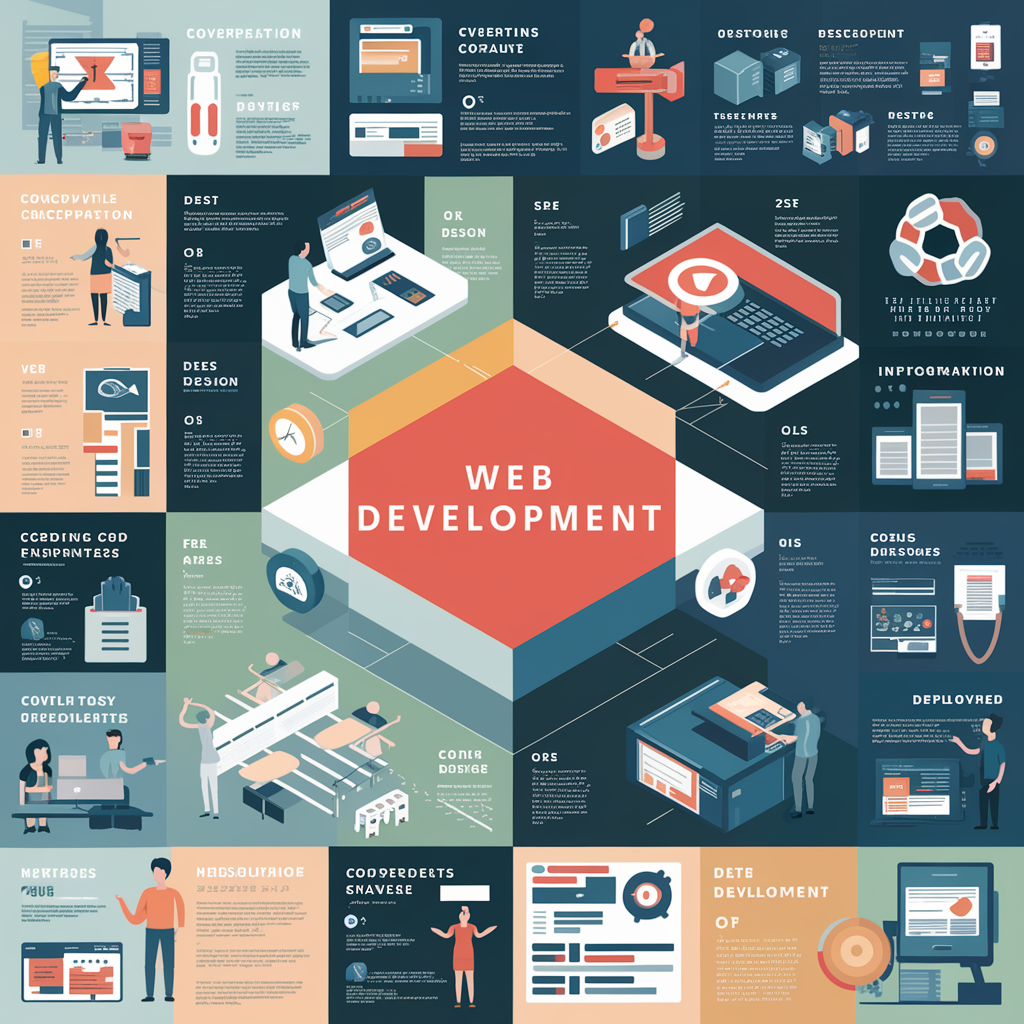JavaScript For Kids
“JavaScript Explorers: Fun and Easy Coding for Kids” is a vibrant and interactive ebook designed to introduce children to the exciting world of JavaScript programming. Through colorful illustrations, step-by-step instructions, and hands-on coding exercises, young learners will embark on a fun-filled journey to discover the fundamentals of JavaScript in a playful and engaging way. With…
Web development is a dynamic field that has revolutionized the way we interact with information, conduct business, and communicate in the digital age. It encompasses the creation and maintenance of websites and web applications, blending technical skills with creative problem-solving. In this article, we will explore the fundamental aspects of web development, its history, key technologies, and the different roles involved in the process.
What is Web Development?
Web development refers to the process of building and maintaining websites and web applications that run on internet browsers. It involves a combination of coding, design, and content management to create functional and visually appealing digital products. Web development can be broadly categorized into two main areas: front-end development and back-end development.
Front-End Development
Front-end development focuses on the visual and interactive aspects of a website. It involves creating the user interface (UI) and ensuring a smooth user experience (UX). Front-end developers work with three core technologies:
- HTML (HyperText Markup Language): HTML provides the structure and content of a webpage. It defines elements such as headings, paragraphs, links, images, and more.
- CSS (Cascading Style Sheets): CSS is used to style the HTML content, controlling the layout, colors, fonts, and overall visual appearance of a webpage.
- JavaScript: JavaScript is a programming language that adds interactivity and dynamic behavior to websites. It enables features like form validation, animations, and real-time updates.
Back-End Development
Back-end development focuses on the server-side logic and database management that power the front end. It involves handling data, processing requests, and ensuring smooth communication between the server and the client. Key technologies used in back-end development include:
- Server-Side Languages: Popular languages for back-end development include JavaScript (Node.js), Python, Ruby, PHP, and Java. These languages handle the logic and functionality of web applications.
- Databases: Databases store and manage data. Common databases include MySQL, PostgreSQL, MongoDB, and SQLite.
- APIs (Application Programming Interfaces): APIs allow different software systems to communicate with each other. They enable the integration of third-party services and data sources.
The History and Evolution of Web Development
Web development has come a long way since the inception of the World Wide Web in the early 1990s. Here are some key milestones in its evolution:
- 1991: Tim Berners-Lee, a British computer scientist, introduced the World Wide Web. The first website was created, consisting of simple text and hyperlinks.
- 1995: JavaScript was introduced, allowing for dynamic and interactive web pages. This marked the beginning of modern front-end development.
- 1998: CSS was released, providing developers with greater control over the presentation of web pages.
- 2000s: The rise of content management systems (CMS) like WordPress and Joomla made web development more accessible to non-developers.
- 2010s: The advent of HTML5 and CSS3 brought new capabilities for multimedia and responsive design. Frameworks like Angular, React, and Vue.js revolutionized front-end development.
- 2020s: Progressive Web Apps (PWAs), single-page applications (SPAs), and serverless architectures are pushing the boundaries of what is possible in web development.
Key Roles in Web Development
Web development is a collaborative effort that involves various roles, each with specific responsibilities:
- Web Designers: Web designers focus on the visual aspects of a website. They create layouts, choose color schemes, and design graphics to ensure an aesthetically pleasing and user-friendly experience.
- Front-End Developers: Front-end developers bring the designs to life using HTML, CSS, and JavaScript. They ensure that the website is responsive and works seamlessly across different devices and browsers.
- Back-End Developers: Back-end developers handle the server-side logic, databases, and application functionality. They ensure that data is processed correctly and efficiently.
- Full-Stack Developers: Full-stack developers have expertise in both front-end and back-end development. They can handle the entire development process from start to finish.
- UX/UI Designers: UX/UI designers focus on optimizing the user experience and interface. They conduct user research, create wireframes, and design interactive prototypes.
- DevOps Engineers: DevOps engineers manage the deployment, scaling, and maintenance of web applications. They ensure that the infrastructure is reliable, secure, and efficient.
Conclusion
Web development is an ever-evolving field that plays a crucial role in the digital world. It requires a blend of technical skills, creativity, and problem-solving abilities to create websites and web applications that are functional, user-friendly, and visually appealing. Whether you’re interested in front-end, back-end, or full-stack development, there’s a place for you in this dynamic industry. As technology continues to advance, the possibilities in web development are endless, making it an exciting and rewarding career path.






